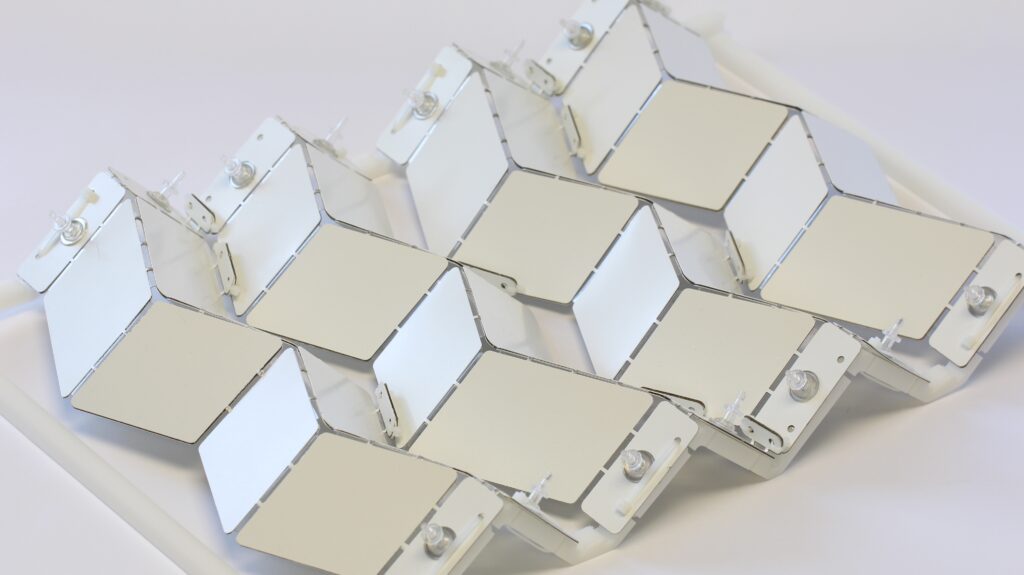Grinham Research Group
Harvard University Graduate School of Design
Origami Microfluidics
Radiant Cooling
Project Overview
Design and fabrication methods translated from microfluidics, microelectromechanical systems, origami, and biologically inspired engineering may offer efficiency improvements for water-based thermoregulation in buildings. This study introduces foldable radiant cooling devices that are fabricated by lamination with integrated microfluidic water-circuits.
Insight
At 75 W/m2, a higher surface temperature [2C˚] increases global average Natural Ventilation Hours by 24%

Innovation
Project Team
Jonathan Grinham
Salman Craig
Donald E. Ingber
Martin Bechthold
The origami microfluidic devices produce more surface convection because of their geometry and because they have more surface area than flat panels. As a result, lukewarm water instead of chilled water may be sufficient for cooling a room, leading to potential savings in primary energy use and lifecycle greenhouse gas emissions. Analytical models and physical experiments show a 55–67% improvement in thermal performance when comparing these novel folded surfaces to flat surfaces, mainly due to the improved convection heat transfer.


